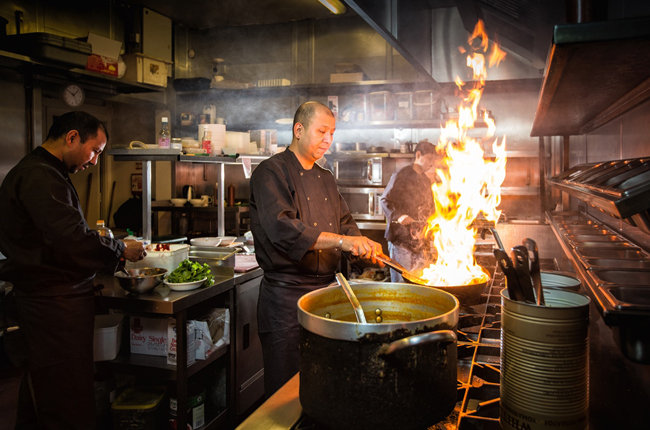
By Natasha Stokes
Hotel restaurants are shedding their stuffy image, thanks to forward-thinking hoteliers who hope to attract food-savvy travelers with buzzy destination restaurants and casual lobby bars.
Take the Mama Shelter boutique hotels. In stark contrast to the faceless hotel cafe of yore, the stylish restaurant and bar in its Paris outpost is a nightspot in its own right that earned accolades for its design, cocktails and simple menu well-executed.
“In the last two decades, food tourism has been a major driver for travel – people go to experience local food and culture,” says Jonathan Doughty, Head of JLL Foodservice Consulting.
Where once a hotel restaurant was likely to be a hungry traveler’s first port of call, cities and towns across the globe now present numerous dining options from food trucks to seven-course tasting menus. Plus finding a place to eat has never been easier with the proliferation of apps and high-speed internet that help travelers choose their ideal meal in their ideal surroundings.
“Guests are more informed, aspirational and they know what good food looks like. They have choice – and hotels can no longer afford to be complacent about their food and beverage (F&B) offerings,” Doughty says.
The end of standardization
While five-star hotels from London to Singapore have long been home to Michelin-starred fine dining restaurants, it is mid-market hotel groups that are making the greatest strides in F&B options, Doughty says.
AccorHotels recently confirmed that its own-design restaurant and artisan café concepts would be rolled out to further outposts, while guests staying at some Marriott Group hotels can dine at the high-street restaurant chain Carluccio’s.
Jack-of-all-trades restaurants that serve it all from curry to pizza – and can seamlessly be rolled out to locations all over the world – are increasingly replaced by eateries with more streamlined menus and whose price point and design fit in with their neighbors. The driver is the continuing increase in travelers’ desire for a localized experience.
“The one-size-fits-all food service provision no longer works for hotels,” Doughty says. Instead, hotel groups such as IHG are focusing on curating a portfolio of dining options that can be targeted to their diverse locations.
These so-called business-leisure hotels – which accommodate business travelers during the week and cater for leisure weekend tourists – have the volume of guests necessary to cushion the impact of investing in upgrading their food offering. When done well, profits from food and beverage offerings can account for 20 to 25 percent of a hotel’s total profits.
Communal value
As hotels refresh their thinking around multi-functional, social spaces, brands including Holiday Inn and Tru by Hilton are rolling out “open lobby” concepts that encourage guests to relax or work in the hotel reception – and food and drinks have a key role to play in encouraging guests to stay.
At Moxy Hotel, the affordable boutique chain launched by Marriott International in 2014, the reception desk is a central island that also houses a casual bar and self-service food bar. Guests are invited to eat, drink and spend time in a stylish, multifunctional setting which not only provides an enjoyable experience but also helps create a positive ambiance within the hotel.
“This is a good example of a 100-year-old, upper-end hotel group providing a food service that isn’t overpromising and under-delivering,” Doughty says. “It’s about creating a social space. The buzz is what it makes a hotel eatery attractive – not the cuisine, price, or even necessarily the location.”
The future of hotel food
The hotel restaurant marketplace is still relatively unexplored, and with lower real estate costs than the high street – at least until more competition rushes in – there is a vast opportunity for food retailers and hoteliers alike to create compelling, modern experiences.
“The key word is appropriate – a successful hotel restaurant speaks to the consumer base of the hotel, and it speaks to the local competition,” Doughty says. After all, as he notes, hoteliers are in the fortunate position of having a ready customer base at their fingertips every night – and they need food to eat both before they head to bed and in the morning.

